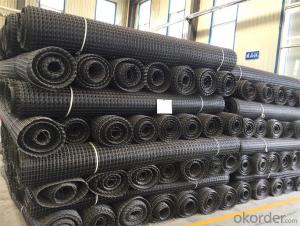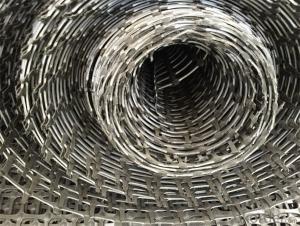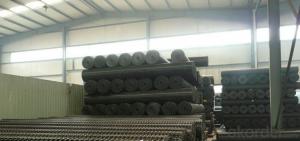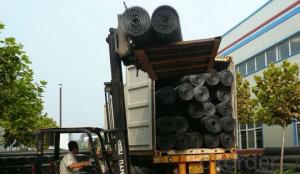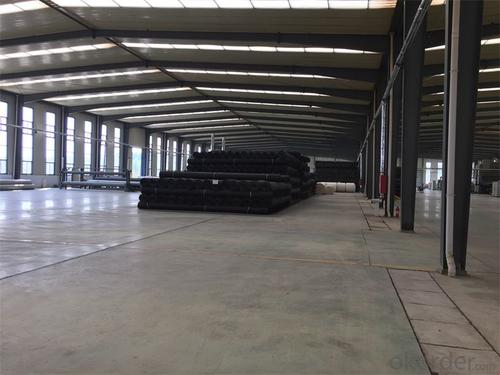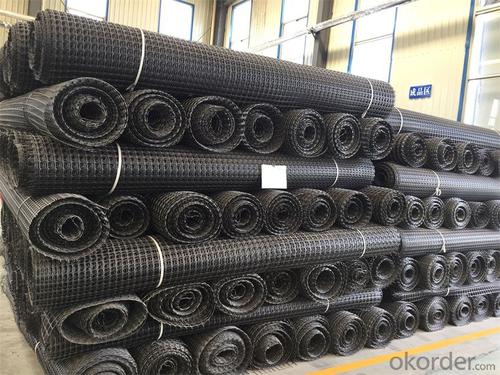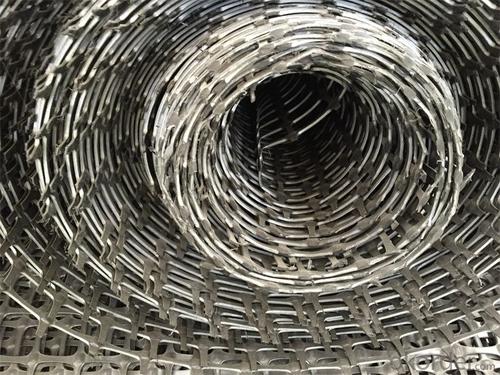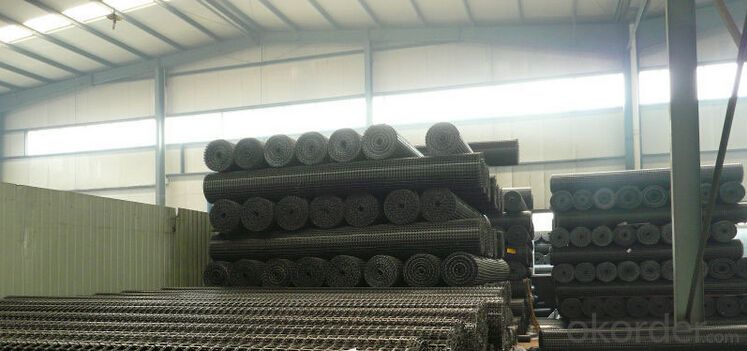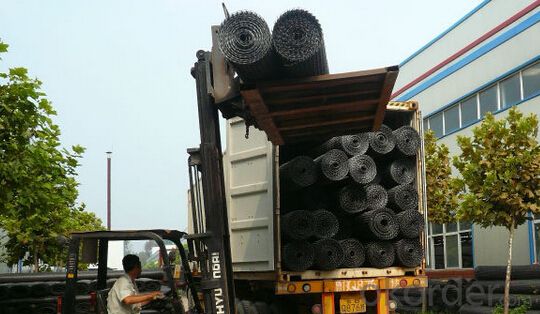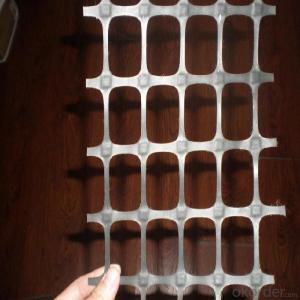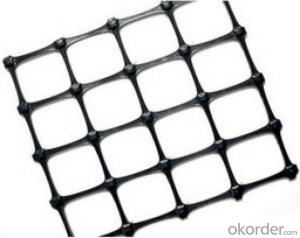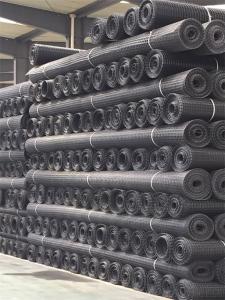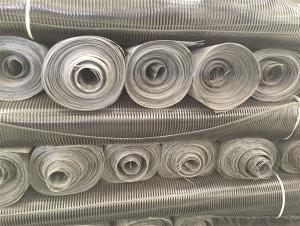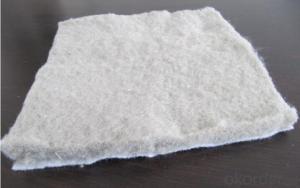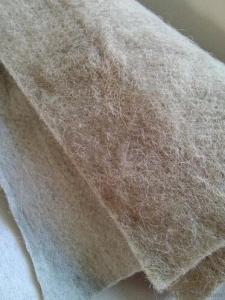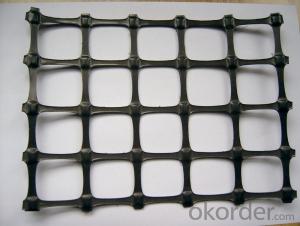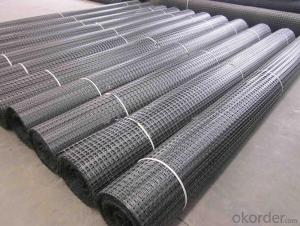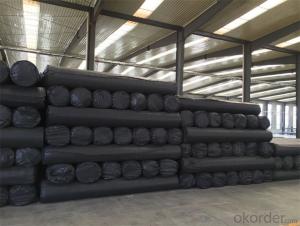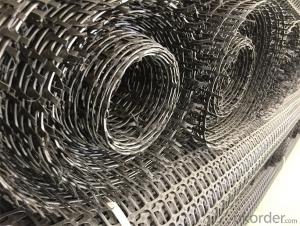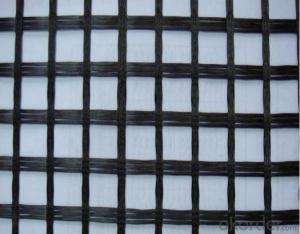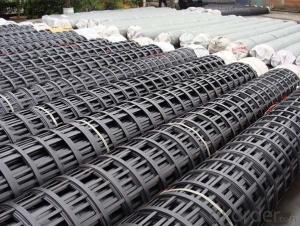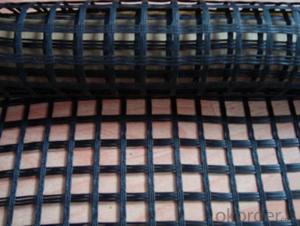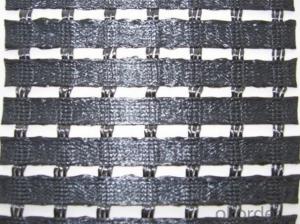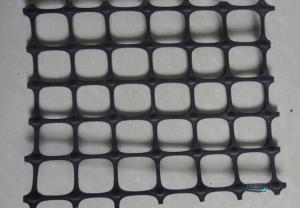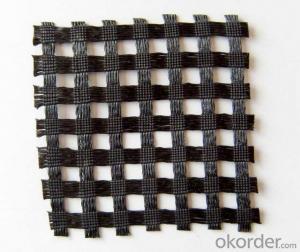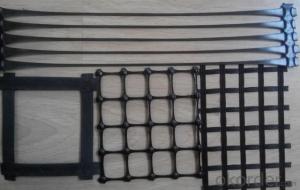Biaxial Water-soluble PVC Coated Polyester Geogrid Big Mesh
- Loading Port:
- Qingdao
- Payment Terms:
- TT OR LC
- Min Order Qty:
- 5000 m²
- Supply Capability:
- 2000000 m²/month
OKorder Service Pledge
OKorder Financial Service
You Might Also Like
Specifications of Geogrid:
Paved roads
PP geogrid
Biaxial geogrid
Extruded geogrid
Secondary reinforceme
Applications of Geogrid:
Make reinforce treatment for various kinds of soft soil foundation to evenly distribute load stress and reduce uneven settlement, not easy to generate static electricity, and flammability property good in the coal mine. It is easy to wash coal.
Used in highway, railway, port, airport and municipal project. Support in the recovery working face of coal mine and roadway in the coal mine.
Index Properties | Test Method | Unit | GG1515 | GG2020 | GG3030 | GG4040 |
MD TD | MD TD | MD TD | MD TD | |||
Polymer | -- | -- | PP | PP | PP | PP |
Minimum Carbon Black | ASTM D 4218 | % | 2 | 2 | 2 | 2 |
Tensile Strength@ 2% Strain | ASTM D 6637 | Kn/m | 5 5 | 7 7 | 10.5 10.5 | 14 14 |
Tensile Strength@ 5% Strain | ASTM D 6637 | Kn/m | 7 7 | 14 14 | 21 21 | 28 28 |
Ultimate Tensile Strength | ASTM D 6637 | Kn/m | 15 15 | 20 20 | 30 30 | 40 40 |
Strain @ Ultimate Strength | ASTM D 6637 | % | 13 10 | 13 10 | 13 10 | 13 10 |
Structural Integrity | ||||||
Junction Efficiency | GRI GG2 | % | 93 | 93 | 93 | 93 |
Flexural Rigidity | ASTM D 1388 | Mg-cm | 700000 | 1000000 | 3500000 | 10000000 |
Aperture Stability | COE Method | mm-N/deg | 646 | 707 | 1432 | 2104 |
Dimensions | ||||||
Roll Width | -- | M | 3.95 | 3.95 | 3.95 | 3.95 |
Roll Length | -- | M | 50 | 50 | 50 | 50 |
Roll Weight | -- | Kg | 39 | 50 | 72 | 105 |
MD denotes Machine direction. TD denotes transverse direction. | ||||||
Property of Geogrid:
1.) Improve roadbed bearing capacity,enlarge road lifetime.
2.) Prevent road collapse and crack
3.) Prevent soil and water loss in slope
4.) Could replace steel-plastic geogrid in coal mine.
FAQ:
1. How to order your geogrid ?
a). Tensile strength in warp & weft direction
b). Grid size
c). Width and length
d). Quantity
2. Payment term .
a) TT
b) LC AT SIGHT
c) cash
d) 30% contact value as deposit ,the blance 70% be paid after received the copy of bl .
3. Delivery time
a) 19-25 days after received your depsit .
4. What is MQQ ?
a) 2500 m2 as MQQ , we can also produce sample for you .
Geogrid Show:
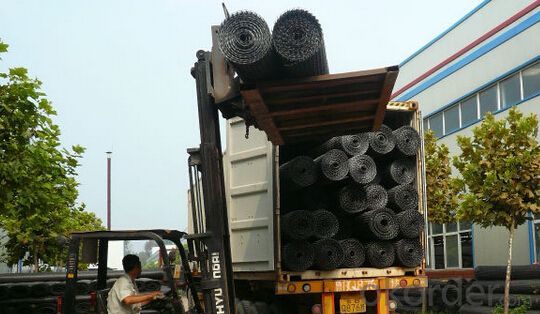
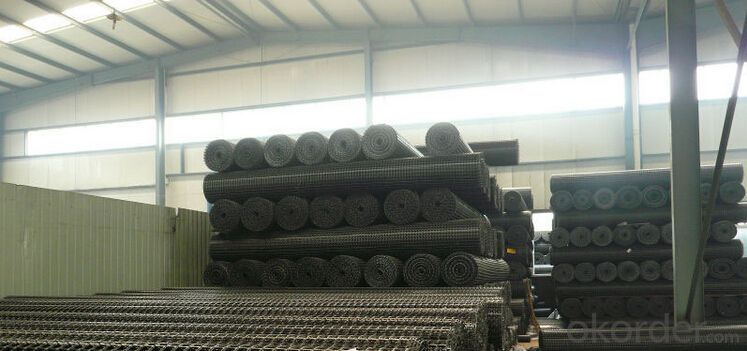
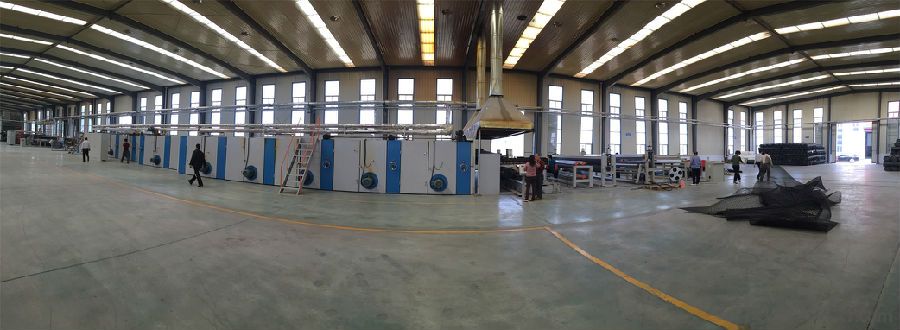
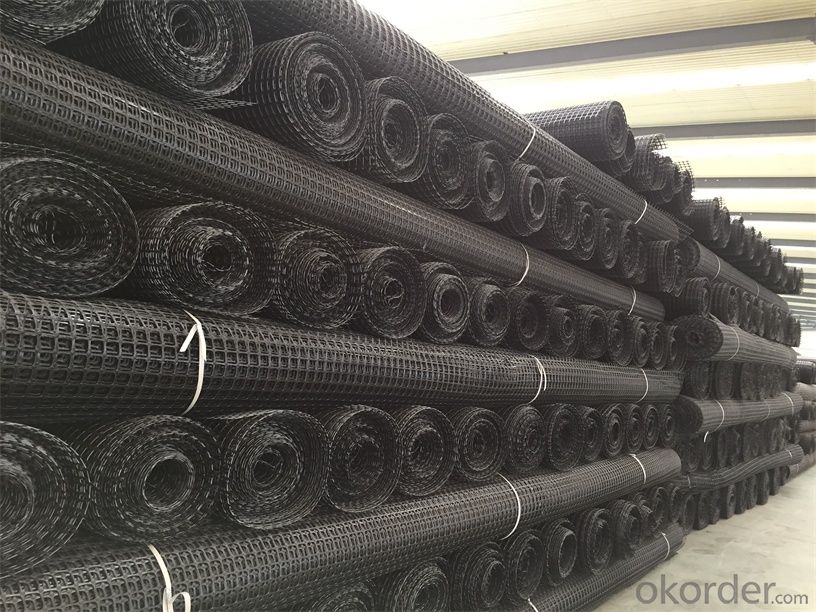
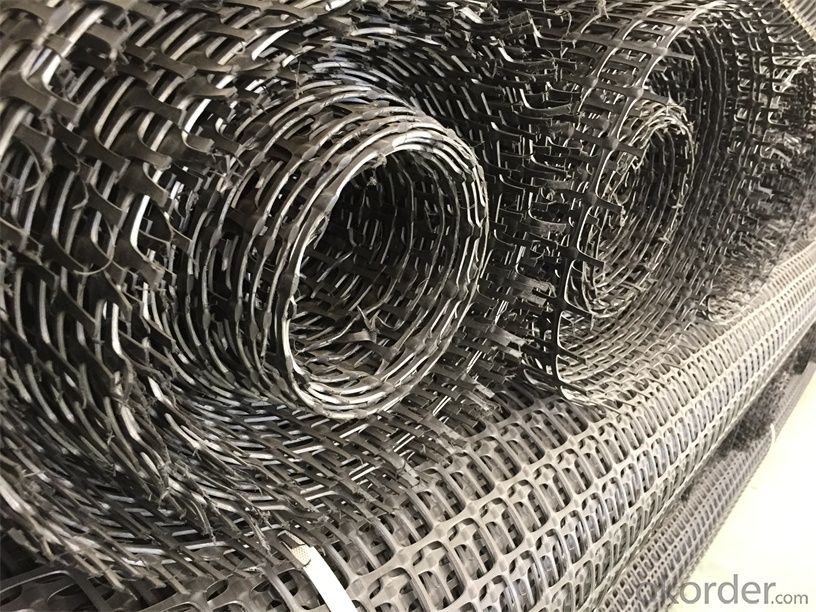
- Q: How do geogrids improve the performance of geosynthetic reinforced slopes?
- Geogrids improve the performance of geosynthetic reinforced slopes by providing reinforcement and stability to the soil mass. They distribute the load more evenly, reducing stress concentrations and preventing soil movement. This reinforcement increases the slope's resistance to erosion, slope failure, and overall deformation, enhancing its overall performance and longevity.
- Q: Introduction of steel plastic grille
- Construction technology of steel plastic grille
- Q: Can geogrids be used in reinforcement of mechanically stabilized earth bridge abutments on collapsible soils?
- Yes, geogrids can be used in the reinforcement of mechanically stabilized earth bridge abutments on collapsible soils. Geogrids are commonly used in such applications to enhance the stability and load-bearing capacity of the soil, preventing lateral movement and potential collapse. The geogrids provide additional tensile strength and distribute the loads more efficiently, ensuring the long-term stability and durability of the bridge abutments on collapsible soils.
- Q: What are the long-term maintenance requirements for geogrid-reinforced structures?
- The long-term maintenance requirements for geogrid-reinforced structures typically involve periodic inspections to ensure the integrity of the structure and the geogrid. These inspections may include visual assessments, measurements, and testing to detect any signs of damage, settlement, or deterioration. Additionally, regular cleaning and removal of debris from the structure is necessary to prevent blockages or potential damage. Overall, proper maintenance and timely repairs are essential for the longevity and performance of geogrid-reinforced structures.
- Q: What is a plastic geogrid? What do you say is a one-way geogrid?
- The unidirectional plastic geogrid is made of high density polyethylene (HDPE) as the raw material, and then extruded into a thin plate and then punching the regular hole net, and then the longitudinal tensile geogrid.
- Q: High density polyethylene one-way geogrid, tensile yield of 20kn/m
- NamelyUnidirectional geogrid with tensile yield of 20kn/m
- Q: Geocell of earthwork grid construction method
- What is geocellGeocell is a kind of three-dimensional grid lattice structure geocell, which is made of HDPE material, which is welded by high strength.What are the characteristics of geocell1, with flexible, transport may be collapsed, the construction can be a Lacheng mesh, fill soil, gravel, concrete and other loose material, which has the structure of strong lateral limit and rigid body.2, light material, wear resistance, chemical stability, light oxygen aging, acid and alkali resistance, suitable for different soil and desert soil conditions.3, the higher lateral restrictions and non slip, anti deformation, effectively enhance the bearing capacity of the subgrade and scattered load.4, to change the height of geocell, welding distance and other geometric dimensions to meet the needs of different projects.5, flexible and easy to transport small size, convenient connection, construction speed.
- Q: Do geogrids provide reinforcement to geosynthetic asphalt liners?
- Yes, geogrids do provide reinforcement to geosynthetic asphalt liners.
- Q: What is the recommended overlap for geogrid installation?
- The recommended overlap for geogrid installation typically varies depending on the specific project and soil conditions. However, a common guideline is to have a minimum overlap of 1-2 feet (30-60 cm) for proper stability and load distribution. It is always best to consult the manufacturer's recommendations or seek professional advice for specific installation requirements.
- Q: High strength geogrid reinforced cloth, steel plastic grille, PET polyester grille, PP welded geogrid, steel plastic composite tensile band, where are these geosynthetics produced?
- Geogrid is divided into four categories: plastic geogrid, steel plastic geogrid, fiberglass geogrid and polyester polyester geogrid.Turn left and turn right |
Send your message to us
Biaxial Water-soluble PVC Coated Polyester Geogrid Big Mesh
- Loading Port:
- Qingdao
- Payment Terms:
- TT OR LC
- Min Order Qty:
- 5000 m²
- Supply Capability:
- 2000000 m²/month
OKorder Service Pledge
OKorder Financial Service
Similar products
Hot products
Hot Searches
Related keywords

